We depend on the shower to keep us clean and rejuvenated as part of our regular hygiene practice. Nonetheless, a clogged or slow draining shower drain can be annoying and uncomfortable. Calcium accumulation is one of the most typical reasons for shower drain obstructions. Calcium tends to accumulate over time. This tends to happen when calcium and magnesium minerals settle down in pipes.
A common problem in many homes is hard water, especially in places where the water supply has a lot of minerals. If the issues are not addressed on time, they can cause further damage.
In extreme circumstances, it can need pricey replacements or repairs.
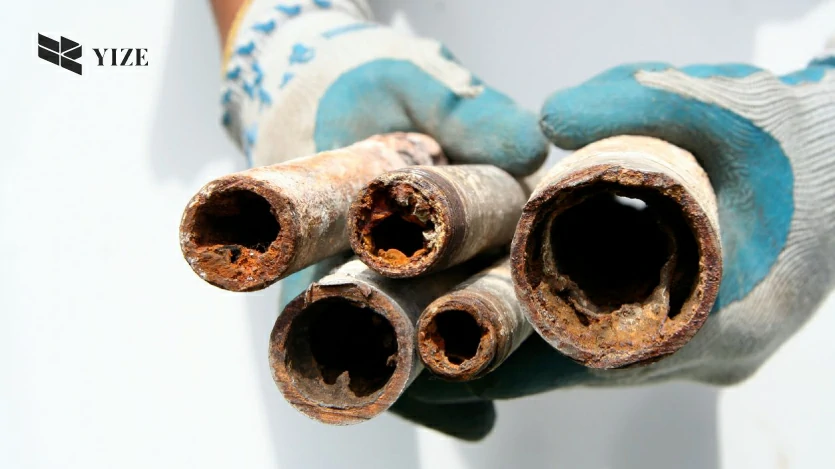
The good news is that you can take action to clean the calcium buildup from your shower drain. The following article describes in detail the steps and materials needed. Also, we will offer advice on how to stop calcium buildup in the future.
The following suggestions can help you keep your shower drain clean. Improving your everyday shower routine.
Step 1: Remove all debris from the drain
Clear any visible debris before removing any calcium buildup from your shower drain.
You’ll need a pair of gloves, a flashlight, and some pliers to clean the drain of debris. To protect your hands from any sharp or filthy things that might be hiding in the drain, put on your gloves first. Then, shine your flashlight down the drain to see any debris that is present. Remove any visible hair, soap scum, or other dirt with your pliers.
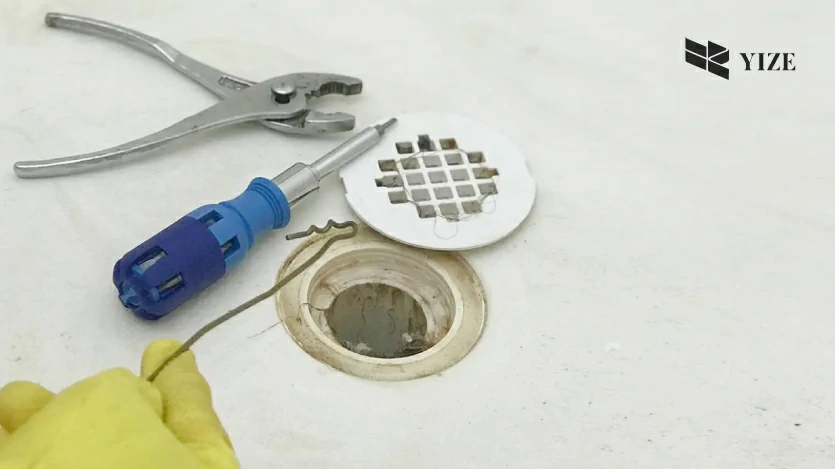
It is crucial to remove as much debris as before attempting to remove calcium buildup. This allows us to be sure that the main source of obstruction is the calcium buildup and not the debris.
If the blockage still exists, calcium accumulation is most likely the root cause.
Clearing the drain of debris is a simple but crucial first step. It will help reduce calcium buildup from your shower drain.
Allowing us to remove the build up in a more efficient manner.
Step 2: Determine the issue’s origin
Determine the cause of the calcium build up before you begin cleaning the shower drain. Hard water is the most frequent reason for calcium accumulation. Calcium and magnesium have high quantities of minerals in hard water. They can over time build up in pipes and fixtures. You can determine if you have hard water by looking for signs like soap scum, white residue on faucets, and discolored clothing. If the root cause of calcium buildup in your shower drain is due to hard water, install a water softener. A water softener removes the minerals from the water. This helps to keep them from accumulating in your plumbing fixtures.
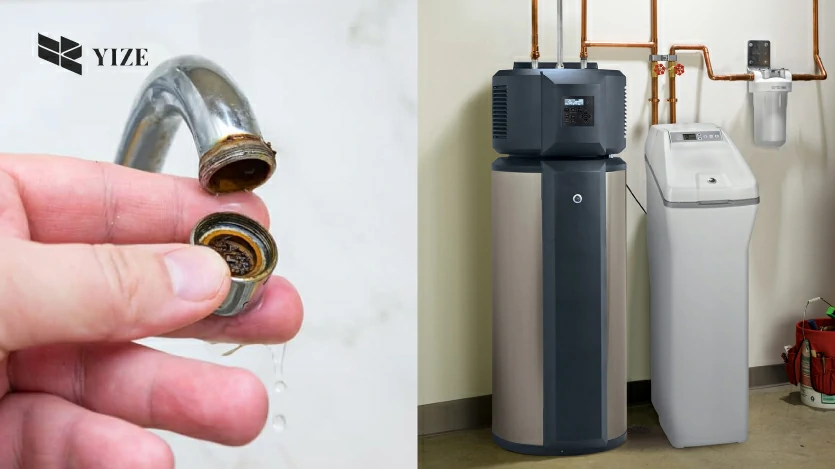
Step 3: Collect Your Ingredients
Get the necessary supplies before you begin cleaning the shower drain. You will need the following items:
Rubber gloves, hot water, a drain snake or wire hanger, baking soda, and vinegar

Step 4: Clean the Drain
The first step in removing calcium buildup is cleaning out hair or other debris. This will give us a clean slate in dealing with the main issue. Use a drain snake or a wire hanger to get this task done. Pull out any hair or debris by simply inserting the wire hanger or drain snake into the drain.
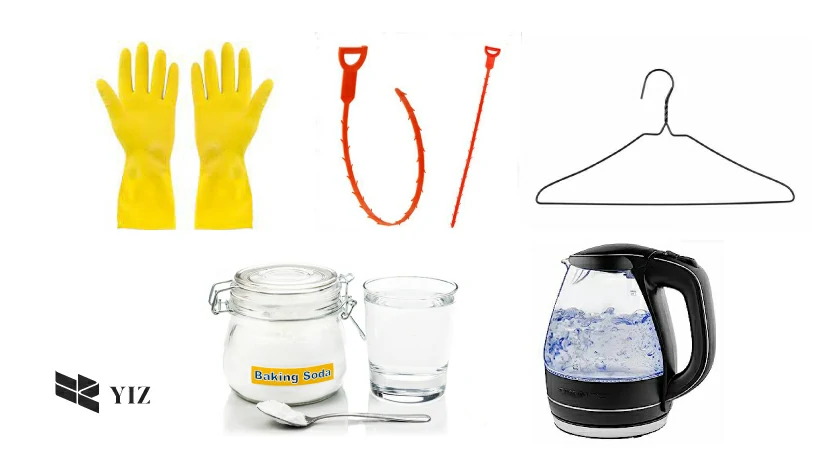
Step 5: Pour Baking Soda and Vinegar
When the drain is free of obstructions, it is time to begin removing the calcium deposit. Using vinegar and baking soda in conjunction is the most effective way to accomplish this. While vinegar is a natural acid that can dissolve calcium, baking soda is a natural abrasive that can aid in removing the mineral buildup. Start by dumping a cup of baking soda down the drain to apply this technique. After that, drink a cup of vinegar. As the combination reacts to the calcium accumulation, it will froth and bubble. Let the mixture take at least 30 minutes to rest in the drain.
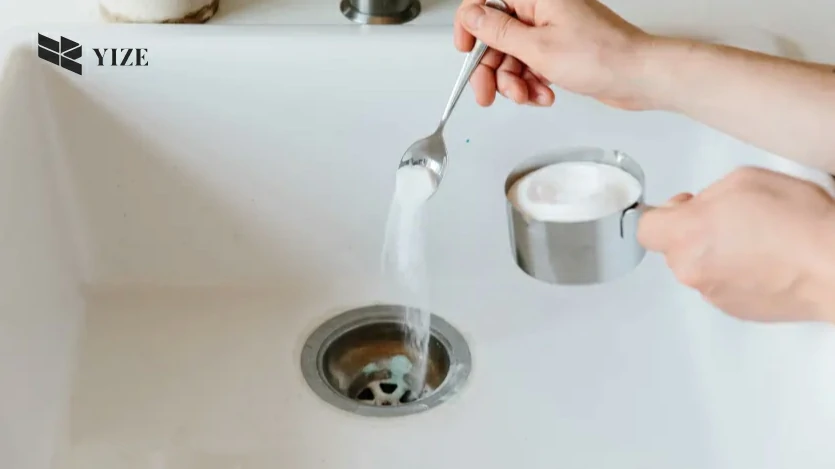
Step 6: Flush the Drain
It’s time to flush the drain with hot water after 30 minutes. Pour some water that has been heated up down the drain. Any leftover calcium buildup will be flushed away with the aid of the hot water.

Step 7: Repeat as Needed
You might need to repeat the baking soda and vinegar step a few times if the calcium buildup is significant. For a deeper clean, you may also let the mixture sit in the drain all night.
Step 8: Prevention
The key to preventing recurring clogs in your shower drain is to prevent calcium buildup. Here are some recommendations for avoiding calcium buildup:
Install a shower head filter. This filter allows minerals to remove minerals from the water. This added step will stop the mineral buildup in the shower drain.
Install a water softener and use it to reduce calcium buildup in your plumbing fittings.
Add a drain strainer to trap hair and other debris before they enter the drain to avoid blockages.

Conclusion
In summary, calcium buildup in a shower drain can result in a wide range of issues. This includes clogs, delayed draining, and even plumbing damage. But, with the help of this article, you now have the knowledge to remove any calcium buildup from any drain. By using the steps explained above, expensive plumbing repairs can be avoided. Installing a water softener, the use of a showerhead filter, and the use of a drain strainer all help with this. By following the instructions given above, your shower drain will always be functional, which gives you a relaxing and effective showering experience.
Don’t forget to locate the issue’s origin, use the required tools, and follow the main procedures to avoid further buildup. By following these guidelines, you can keep your shower drain functioning and clear. Giving you a fresh and clean shower experience every day.

